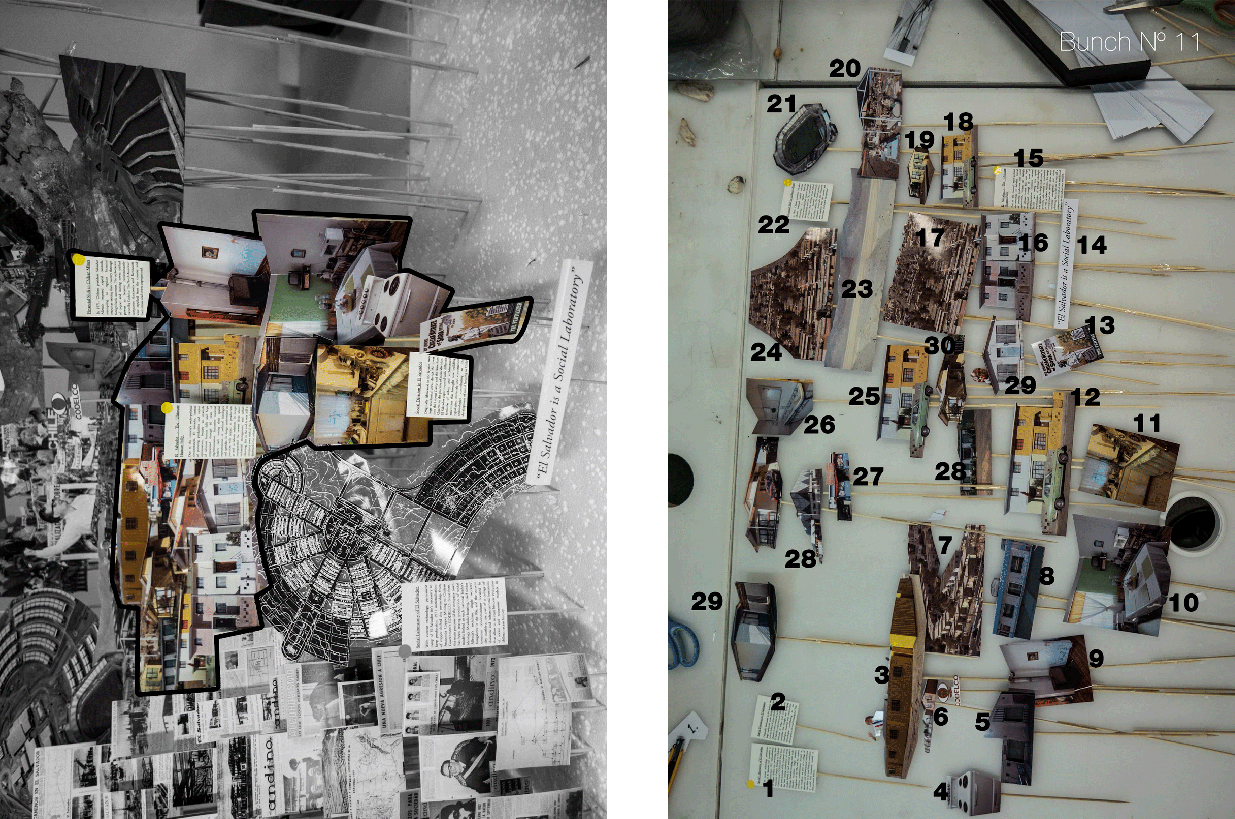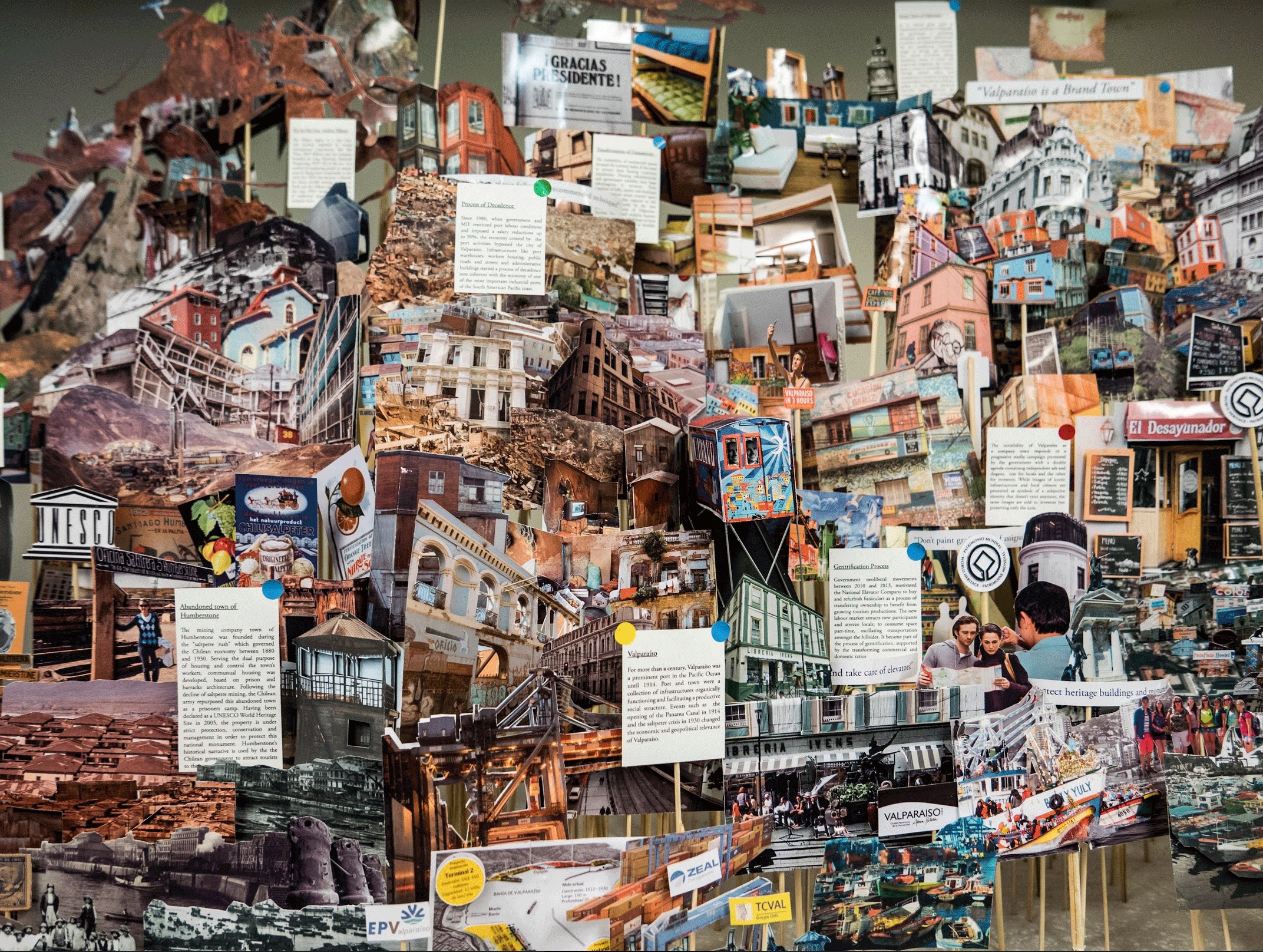IMMATERIAL COMPANY TOWNS
‘Immaterial Company Town’ chronicles the advent of three mining company towns in late-capitalism: El Salvador, Valparaiso and Perth. Each one was originally a traditional company town that enclosed housing and infrastructures in isolated precincts socially and spatially arranged to optimise production. Yet, recent changes in their models of domesticity, in their morphology, in their logics of production, evidence the increasing dematerialisation of company towns.
El Salvador, a company town conceived for housing workers of a remote copper mine in the Atacama Desert, stopped being cost-effective for mining production years ago. However, it has been consistently used as a social laboratory by the Chilean Government. In 1971 Allende’s nationalisation of copper shifted its ownership from the U.S.-based Anaconda Copper Mining to state-owned mining conglomerate CODELCO. Mining stopped guiding the logic of the Salvador’s spatial organisation. Rather, successive regimes tested social and urban models eventually implemented at the scale of the country. The Allende administration prototyped a cybernetic control room, Cybersyn, and imported modular housing from the USSR. Following the 1973 coup, the Pinochet Dictatorship recovered Anaconda’s domestic units within the nationalised framework. The subsequent democratic governments of the ‘1990s build bachelor-pad bungalows for re-privatised companies. The Bachelet’s tenure shifted to the container condominiums and sustainable urbanism. This sequence of domestic and infrastructural variations not only maps Chile’s recent socio-political history, it proves the shift from mineral extraction to immaterial production of social imaginaries.
The Cybersyn Project, Salvador Allende’s control room that allowed taking real-time decisions on the national economy, was never fully operative, yet Perth hosts its afterlife. Companies such as BHP, Hancock Prospecting or Rio Tinto screen their fly-in-fly-out (FIFO) networks from uncannily similar control rooms. FIFO is a model of trans-territorial domesticity that mobilise close to 65,000 miners travelling between Perth and remote sites in weekly cycles. It disperses the traditional components of company towns. The suburban family house, the airport lounge, the airplane cabin, or the collective dining room are the components of a domestic experience distributed through the territory. As a result, FIFO is weaving an archipelago of productive suburbs that are over 600 kilometres away from one another.
Meanwhile, in Valparaíso the Chilean government is retrofitting obsolete industrial infrastructures with a production line that manufactures heritage and memory. This new cultural extractivism replaces the explicit biopolitics of a company town with architectural preservation policies. Heritage manuals persuade local SMEs to transform workers housing into tourist accommodation; urban regulations define a mandatory palette of colours for the picturesque facades, and industrial elevators become official sightseeing service under the auspices of the UNESCO declaration of world heritage.
INDO-PACIFIC ATLAS
Immaterial Company Towns was part of the longer-term research project Indo-Pacific Atlas, a collection of maps of the Indo-Pacific Region directed by Fake Industries Architectural Agonism in collaboration with academics, researchers, students and other practitioners. The version of this Atlas presented for the Chicago Architecture Biennial consists of approximately four thousand images that, when juxtaposed and then placed in sequence, fosters immediate, synoptic insights into the urban constituencies of the region. The Atlas charts intersections of media, capital flows, gentrification, and posttraumatic conditions as well as the implications they had in the recent histories of cities. It functions cartographically, too, as it links Cape Town, Medellin, Qatar and Valparaiso and Medellin together in a ten-meter-long panorama.


